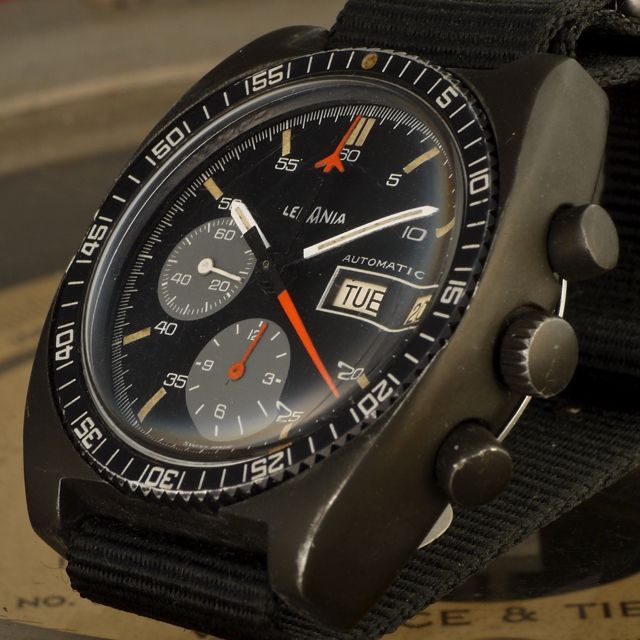
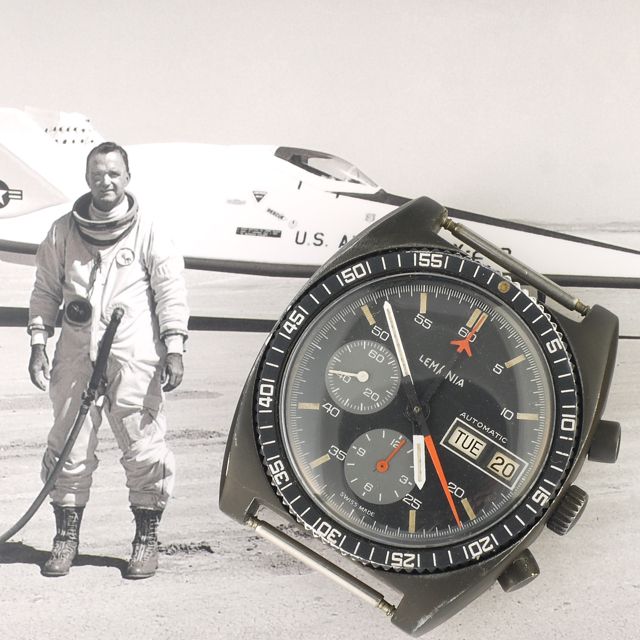
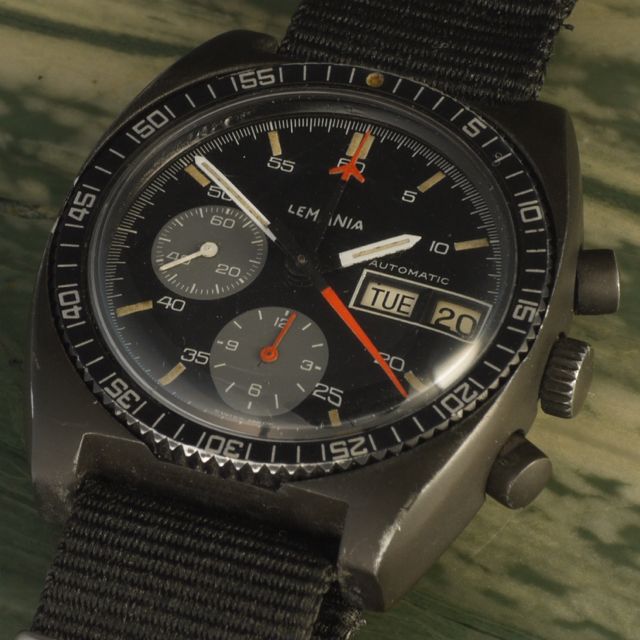
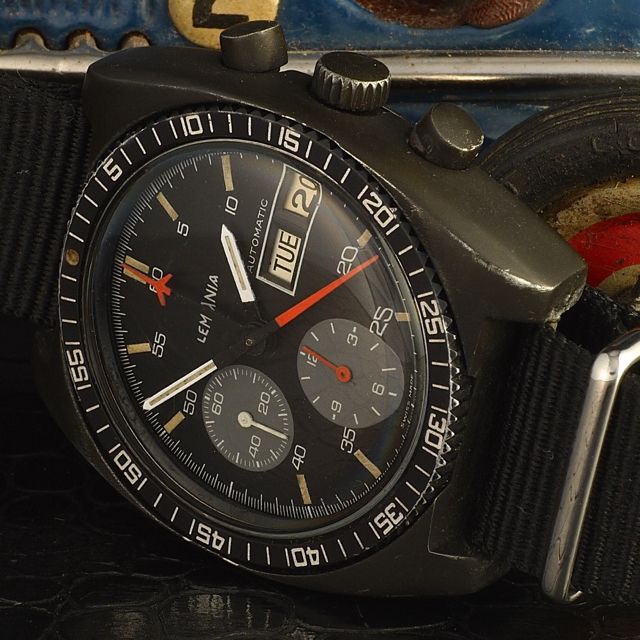
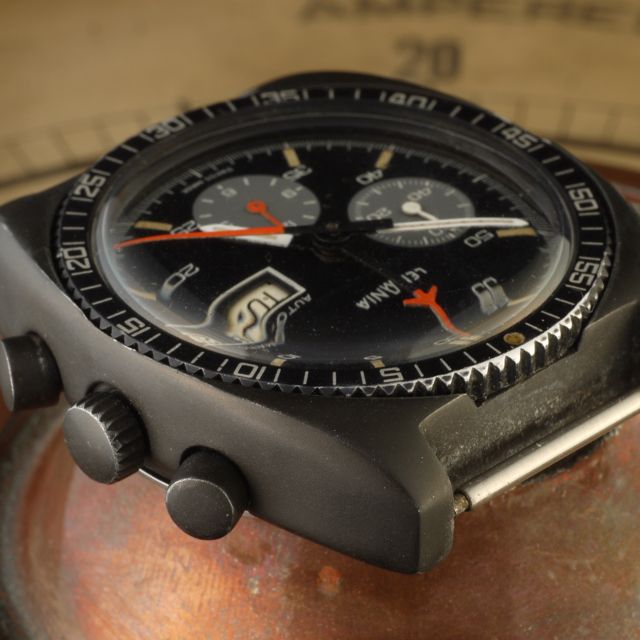
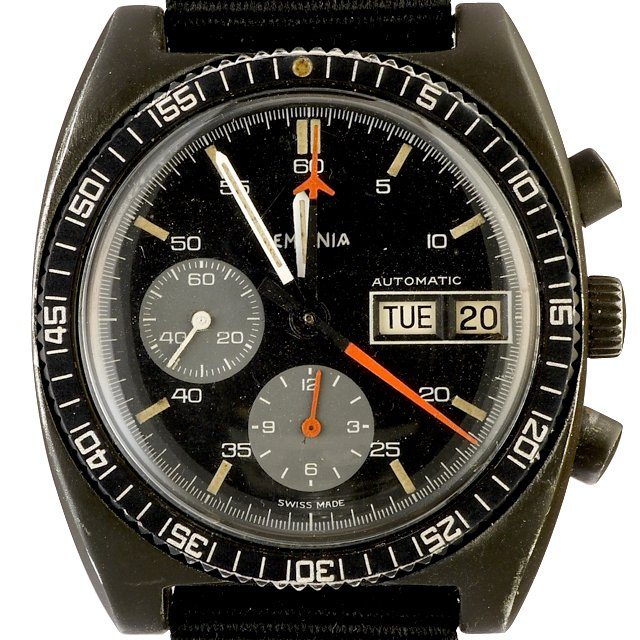
Lemania Chronograph
India successfully tests an atomic device, becoming the world's sixth nuclear power1974 Lemania Chronograph ref. 5012, a cool poor man Heuer chronograph with PVD aluminum 38mm. case and SS case-back, I like the way the case protects the bi-directional bezel, automatic movement cal. Lemania 5012 based on the 5100 movement, the 5012 omits the 24-hour register at 12 o’clock. an authentic.
Exact same watch was to made by request for Philip Morris and their Marlboro/McLaren Ford F1 racing in 1974 and was the official watch from the team.
The Lemania name first appeared in 1930, right before the company was integrated into Societe Suisse pour l’Industrie Horloge (SSIH), where it joined Omega and Tissot. SSIH along with AUSAG were the two dominant Swiss watch collectives that would later be combined to form the Swatch Group in the early-1980s.
Lemania was always predominately a manufacturer and designer of movements. The partnership between Lemania and Omega was especially strong, and today Lemania still supply movements for the Omega Speedmaster.
From a Heuer perspective, things get interesting in 1978 when Lemania launched the 5100 movement, an automatic movement specifically designed as a response to the arrival of the low-cost Japanese quartz movements that were having a devastating impact on the Swiss watch industry.
In 1981 both SSIH and AUSAG were in serious financial trouble and the Swiss banks forced SSIH to sell some assets to its management team, which is backed by outside investors including the Piaget family. This new company was called Nouvelle Lemania and it’s not hard to imagine that now free of its corporate role as a pure movement-specialist, Nouvelle Lemania started to expand its horizons and starts to look at designing and assembling watches under the Lemania brand.
By 1982 it was Heuer’s turn to face major changes, with Jack Heuer being forced by the Swiss banks to sell Heuer-Leonidas to a new group of investors led by Piaget and Nouvelle Lemania so Heuer was now owned by Nouvelle Lemania and its no surprise that in 1983 we see Heuer phasing out its own Calibre 11/12/14/15 Chronomatic movement, to be replaced with the Lemania 5100 automatic movement, a movement that was significantly cheaper to produce that Heuer’s own Chronomatic design.
The theory that seems the most likely is that in order to create demand for its own movements, the newly independent Nouvelle Lemania itself designed several watches in the late 1970s early 1980s and then offered these watches to other Swiss watch brands. Given the parlous state of the Swiss watch-making industry, the offer of a newly designed chronograph with a low-cost 5100 Lemania movement must have been attractive.
Most of these Poor Man’s versions were sold by brands a lot smaller than Heuer. Sinn, Croton, Hamilton and others. Given that Lemania were partially in control of Heuer, it would’t be surprising if Lemania made the decision that Heuer would sell these designs using old Heuer model names and then looked to bulk up volume with sales to other brands.
Piaget/ Nouvelle Lemania’s ownership of Heuer ended in 1985 when the investor group decided to sell Heuer to the Middle-East investment group Techniques d’Avant Garde (TAG).
